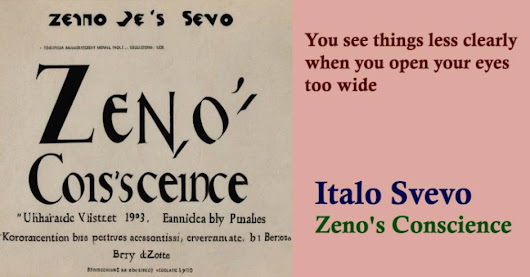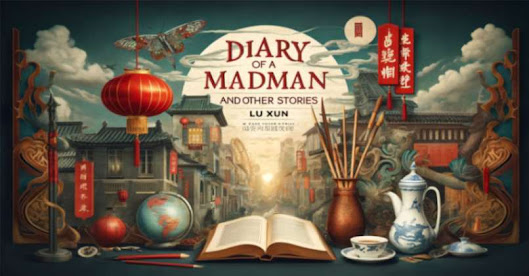%20by%20Elsa%20Morante.jpg) |
| Book Review – 94 – History (La Storia, #1-2) by Elsa Morante |
Title: History (La
Storia). Author: Elsa Morante. Publication Details: Originally
published in Italian in 1974, English translation by William Weaver in 1977. Genre:
Historical Fiction, Political Fiction, War Literature.
Introduction
Elsa
Morante’s History (La Storia) is an expansive and deeply humanistic work of
historical fiction that intricately weaves together the personal and political
dimensions of life during one of the darkest periods of the 20th century.
Published in 1974, the novel emerged as a groundbreaking and controversial
piece of literature in post-war Italy, sparking debates about its unflinching
critique of societal structures and its empathetic portrayal of marginalized
communities. History stands out for its profound exploration of how war impacts
the most vulnerable— women, children and the poor— and its poignant examination
of human resilience and suffering. By intertwining sweeping historical events
with intimate, character-driven narratives, Morante underscores the idea that
history is not merely a series of grand political milestones but a collection
of countless individual stories of survival, loss and hope.
Summary
of the Plot
History
is set against the backdrop of World War II and its aftermath, centering on the
life of Ida Ramundo, a widowed schoolteacher of mixed Italian and Jewish
heritage living in Rome. The story begins with a traumatic incident: in 1941,
Ida is raped by a German soldier, an act of violence that results in the birth
of her second son, Useppe. This event sets the stage for a narrative that
explores the interconnected struggles of Ida and her two sons as they navigate
the physical and emotional devastation wrought by war.
Ida’s
character is defined by her quiet strength and internal conflicts. As a woman
of Jewish descent in fascist Italy, she lives in constant fear of persecution
and repression. Her eldest son, Nino, represents youthful rebellion and
idealism. Initially captivated by fascist propaganda, Nino later joins the
partisan resistance movement, embodying the hopes and disillusionments of a
generation grappling with political ideologies. Useppe, in contrast, symbolizes
innocence and vulnerability. Born from an act of violence, his fragile
existence serves as a poignant counterpoint to the surrounding chaos.
The
novel’s narrative extends beyond Ida’s immediate family, incorporating the
lives of neighbors, refugees and other marginalized figures whose paths
intersect with hers. These vignettes create a mosaic of experiences that
reflect the broader societal impact of war. From the hardships of food
shortages and bombings to the psychological toll of displacement and loss,
Morante captures the multifaceted realities of life in wartime Italy.
As the war progresses, Ida’s family faces profound losses. Nino’s involvement in the resistance movement leads to his tragic death, shattering Ida’s already fragile world. Useppe’s health deteriorates as he struggles with epilepsy, a condition that underscores the vulnerability of children born into conflict. The novel concludes with Useppe’s death, leaving Ida alone and highlighting the cyclical nature of history and the enduring impact of violence on future generations. Through its somber ending, History emphasizes the human cost of war and the resilience required to endure its aftermath.
Analysis
of Themes
The
Human Cost of War:
At its core, History is a searing critique of war and its devastating impact on
individuals and communities. Elsa Morante delves deeply into the physical and
emotional toll of conflict, illuminating the lives of those often ignored in
grand historical narratives. Through Ida’s quiet suffering and Useppe’s fragile
innocence, the novel captures the immense vulnerability of ordinary people
caught in the crossfire of global events. Morante’s portrayal underscores the
fragility of human life and the enduring scars left by violence, compelling
readers to confront the profound human cost of war.
Marginalization
and Inequality:
Morante’s narrative is a powerful examination of systemic injustices,
particularly those faced by women, the poor and minorities. Ida’s dual identity
as a widowed schoolteacher and a Jew places her in a precarious position,
illustrating how societal hierarchies exacerbate individual vulnerabilities.
The novel’s compassionate yet unflinching critique of these inequalities
reveals the pervasive and enduring nature of marginalization. By highlighting
the resilience of characters like Ida, Morante also affirms the dignity and
strength of those on society’s fringes.
Resilience
and Survival:
Despite its bleak themes, History is ultimately a testament to human
resilience. Ida’s quiet determination to shield her children from the worst of
the war and Useppe’s innocent joy amidst adversity serve as poignant reminders
of the enduring human spirit. Morante weaves a narrative that acknowledges
suffering while celebrating the courage and perseverance required to endure it.
This theme resonates universally, offering hope even in the darkest moments.
The
Role of History:
The title of the novel, History, reflects its dual preoccupation with history
as a grand narrative and as a collection of personal, lived experiences.
Morante juxtaposes sweeping historical events with the intimate stories of her
characters, challenging traditional notions of what constitutes history. Her
approach invites readers to reconsider the relationship between the macro and
micro aspects of history, emphasizing that the lives of ordinary people are as
significant as the actions of leaders and nations in shaping the world.
Style
and Structure
Narrative
Style
Morante
employs a third-person omniscient narrator to weave together historical
exposition and deeply personal character studies. This dual approach creates a
rich tapestry of perspectives, providing a comprehensive view of the era while
maintaining an emotional connection with the characters. The narrative is
punctuated by interludes that detail significant historical events, anchoring
the personal stories within a broader context. This interplay between the
personal and the political enhances the novel’s depth and complexity, ensuring
that readers grasp both the individual and collective dimensions of the
narrative.
Language
and Tone
The
language in History is both lyrical and unflinching, reflecting the novel’s
commitment to portraying the full spectrum of human experience. Morante’s prose
captures moments of beauty and tenderness with the same precision as scenes of
brutality and despair. The tone shifts seamlessly between hope and
hopelessness, mirroring the emotional highs and lows of her characters’ lives.
This dynamic use of language and tone allows Morante to evoke deep empathy in
her readers, making the novel a profoundly affecting work.
Critical
Evaluation
Strengths
Emotional
Depth:
Morante’s portrayal of the inner lives of her characters is deeply moving and
psychologically nuanced. Her empathetic depiction of Ida, Useppe, and Nino
allows readers to connect with their struggles and triumphs on a profound
level.
Historical
Context:
The novel’s meticulous integration of historical details with personal
narratives provides a vivid and nuanced understanding of wartime Italy. This
balance enriches the narrative, making it both informative and emotionally
resonant.
Universal
Themes:
Despite its specific historical and cultural setting, History addresses
timeless questions about human suffering, resilience and the cyclical nature of
violence, ensuring its continued relevance.
Weaknesses
Pacing: The interludes
of historical exposition, while insightful, may disrupt the narrative flow for
some readers. These sections can feel overly detailed, potentially detracting
from the emotional immediacy of the story.
Density: Morante’s
layered prose and intricate themes demand careful attention, which may pose a
challenge for readers seeking a more straightforward or leisurely narrative.
The novel’s complexity requires a level of engagement that not all readers may
find accessible.
Conclusion
Elsa
Morante’s History (La Storia) is a profound and ambitious exploration of war,
resilience and the human condition. Through her masterful blend of historical
and personal narratives, Morante illuminates the lives of those often
overlooked in traditional histories. While the novel’s density and pacing may
challenge some readers, its emotional depth and universal themes make it an
essential work of literature. For those seeking a poignant and
thought-provoking portrayal of wartime Europe, History offers an unforgettable
experience.
References
1. Morante,
Elsa. History (La Storia). Translated by William Weaver, Steerforth Press,
1977.
2. Calvino,
Italo. "On Morante’s History." Italian Literary Quarterly, vol. 15,
no. 3, 1974, pp. 45-52.
3. Gordon,
Robert S. C. Morante and the Politics of Memory. Cambridge University Press,
2002.
4. Weiss,
Philip. "The Humanism of Elsa Morante." Modern Fiction Studies, vol.
25, no. 4, 1980, pp. 567-585.
Italy has had one Nobel Prize winner in literature: Luigi Pirandello, who was awarded the Nobel Prize in Literature in 1934. Learn more about him from the following link:
https://worldliterature24.blogspot.com/2024/04/nobel-laurate-1934-luigi-pirandello.html
Frequently
Asked Questions (FAQs)
What
is the central theme of Elsa Morante’s History (La Storia)?
Elsa
Morante’s History (La Storia) novel explores themes of war, resilience,
marginalization and the interplay between personal and historical narratives.
What
role does history play in the Elsa Morante’s novel History (La Storia)?
History functions as both a backdrop and a central theme, examining the relationship between individual lives and broader historical events.
%20by%20Elsa%20Morante.jpg)











